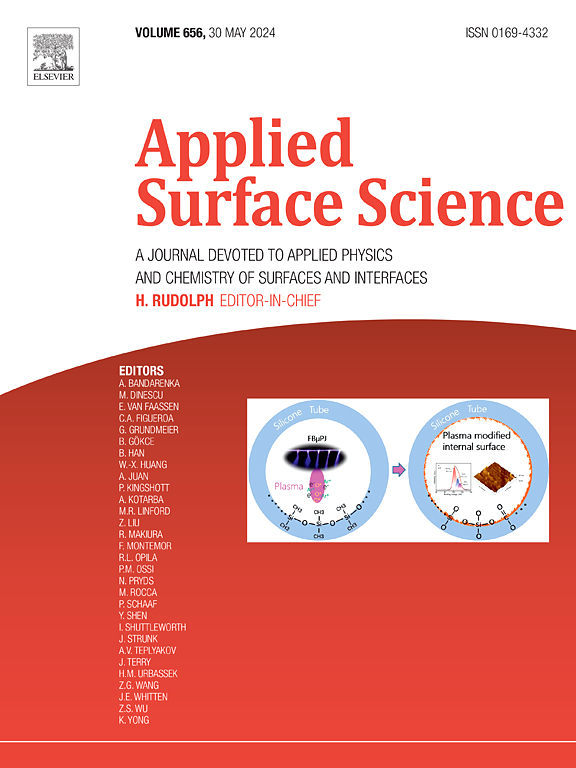一步磷掺杂集成空位工程高效二氧化碳电化学还原
IF 6.3
2区 材料科学
Q2 CHEMISTRY, PHYSICAL
引用次数: 0
摘要
电催化剂的空位工程被认为是提高CO2活化的有效途径。元素掺杂提高了电催化剂的导电性,提高了CO2还原反应(CO2RR)中的电流密度。在此,我们提出了一种简单的策略,将元素掺杂和空位工程一步结合起来。我们选择二硫化锡(SnS2)纳米片作为母电催化剂,磷(P)作为掺杂元素。用高价位的P3−取代低价的S2−,生成了S空位,从而形成了p掺杂的SnS2-x。P掺杂与S空位(PDSVs)的结合诱导了显著的电荷再分配和电子积累,从而产生了降低激活势垒和加速还原动力学的催化活性位点,优于仅含S空位的SnS2-x。此外,PDSVs缩小了带隙,在费米能级上引入了一个新的带,载流子密度是SnS2的5.9倍。因此,与可逆氢电极相比,P-SnS2-x在−1.2 V下产生HCOOH的电流密度为−31.4 mA cm−2。在较大的电势范围内,HCOOH的法拉第效率为>;80 %。这项工作为同时实现电催化剂中元素掺杂和空位工程提供了一步策略。本文章由计算机程序翻译,如有差异,请以英文原文为准。


One-Step phosphorus doping integrated vacancy engineering for efficient carbon dioxide electrochemical reduction
Vacancy engineering of electrocatalysts is recognized as an effective approach to improve CO2 activation. Element doping, which enhances the electrical conductivity of electrocatalysts, can elevate the current density in the CO2 reduction reaction (CO2RR). Herein, we present a facile strategy to integrate elemental doping and vacancy engineering in one step. We select tin disulfide (SnS2) nanosheets as the parent electrocatalyst and phosphorus (P) as the doping element. Substituting the lower-valence S2− with the higher-valence P3−, S vacancies are generated, leading to the formation of P-doped SnS2-x. The combination of P doping with S vacancies (PDSVs) induces significant charge redistribution and electron accumulation, leading to catalytically active sites that lower the activation barrier and accelerate reduction kinetics, outperforming SnS2-x with S vacancies alone. Moreover, PDSVs narrow the band gap and introduce a new band at the Fermi level, showing a carrier density 5.9 times that of SnS2. As a result, P-SnS2-x delivers a current density of −31.4 mA cm−2 for HCOOH production at −1.2 V vs. the reversible hydrogen electrode. A Faraday efficiency >80 % for HCOOH is demonstrated over a large potential range. This work provides a one-step strategy for simultaneously achieving element doping and vacancy engineering in electrocatalysts.
求助全文
通过发布文献求助,成功后即可免费获取论文全文。
去求助
来源期刊

Applied Surface Science
工程技术-材料科学:膜
CiteScore
12.50
自引率
7.50%
发文量
3393
审稿时长
67 days
期刊介绍:
Applied Surface Science covers topics contributing to a better understanding of surfaces, interfaces, nanostructures and their applications. The journal is concerned with scientific research on the atomic and molecular level of material properties determined with specific surface analytical techniques and/or computational methods, as well as the processing of such structures.
 求助内容:
求助内容: 应助结果提醒方式:
应助结果提醒方式:


